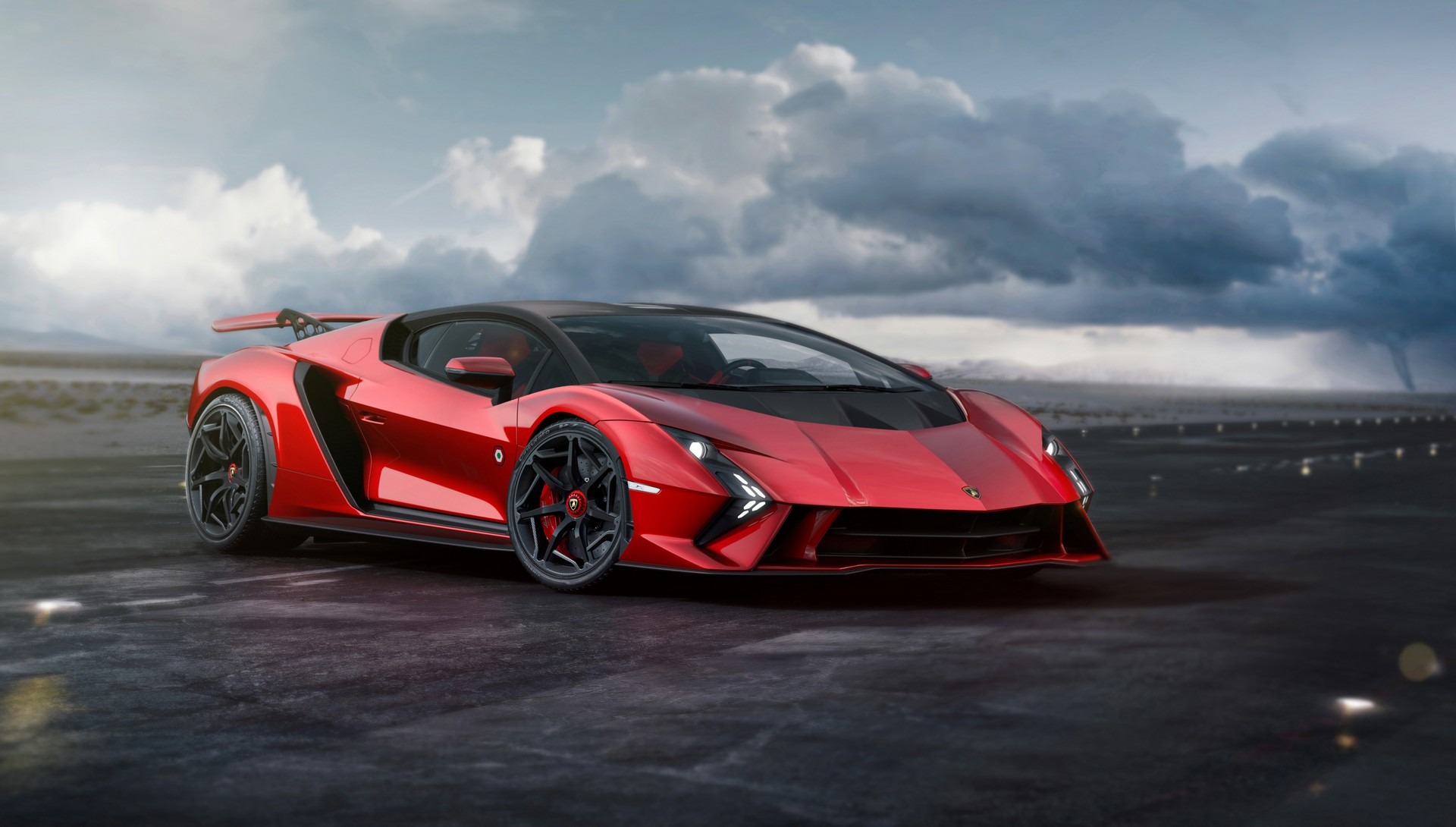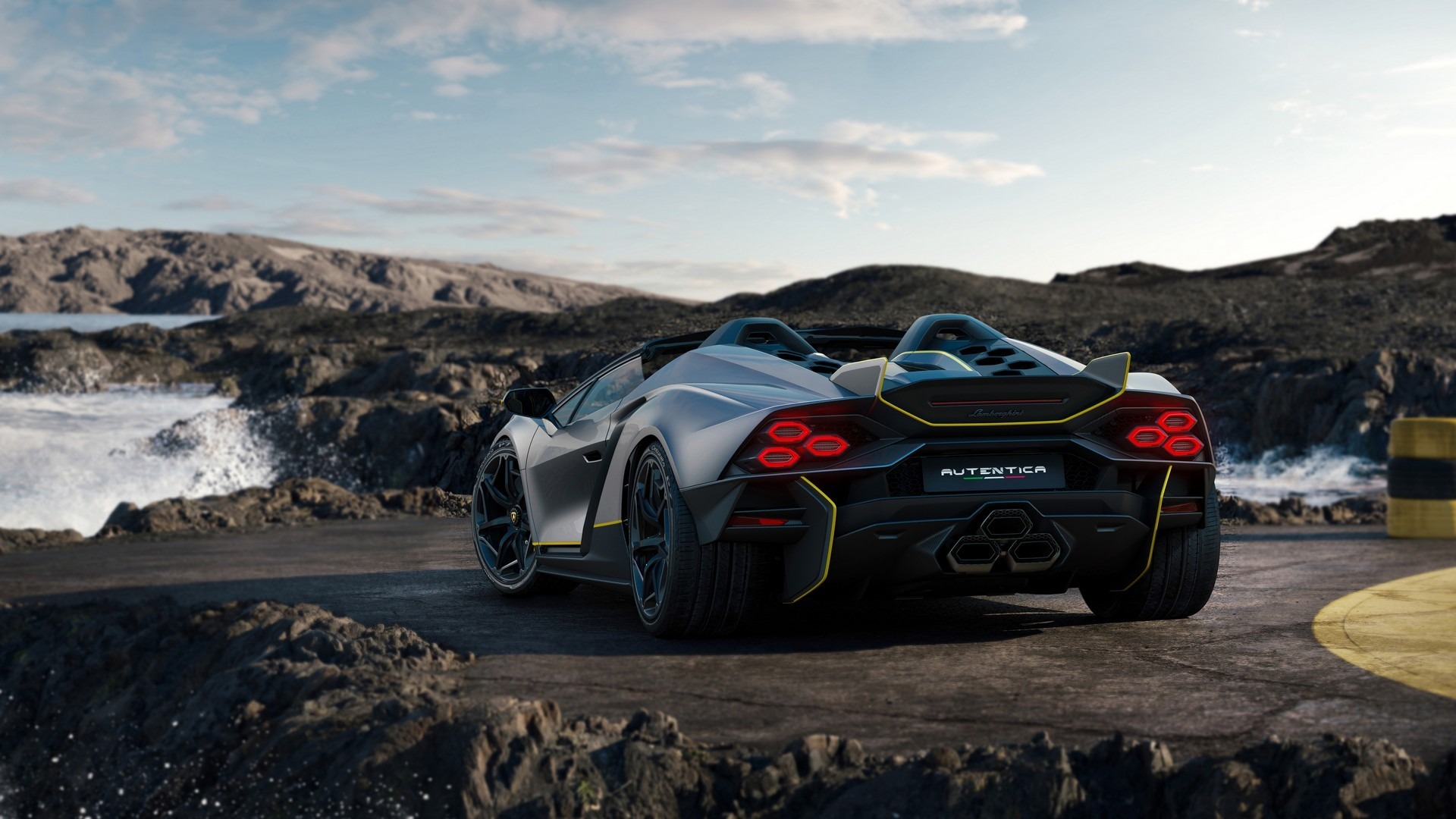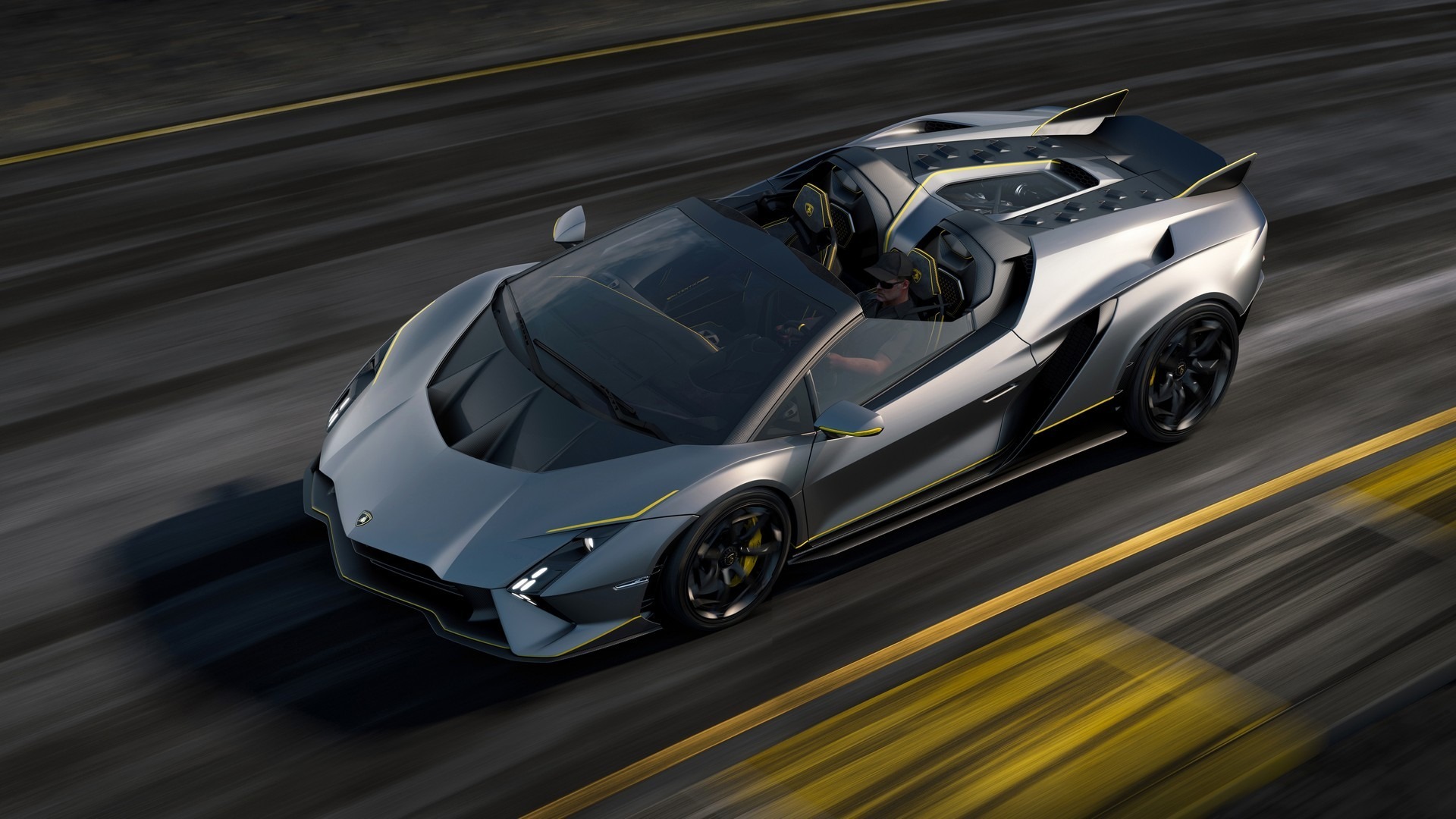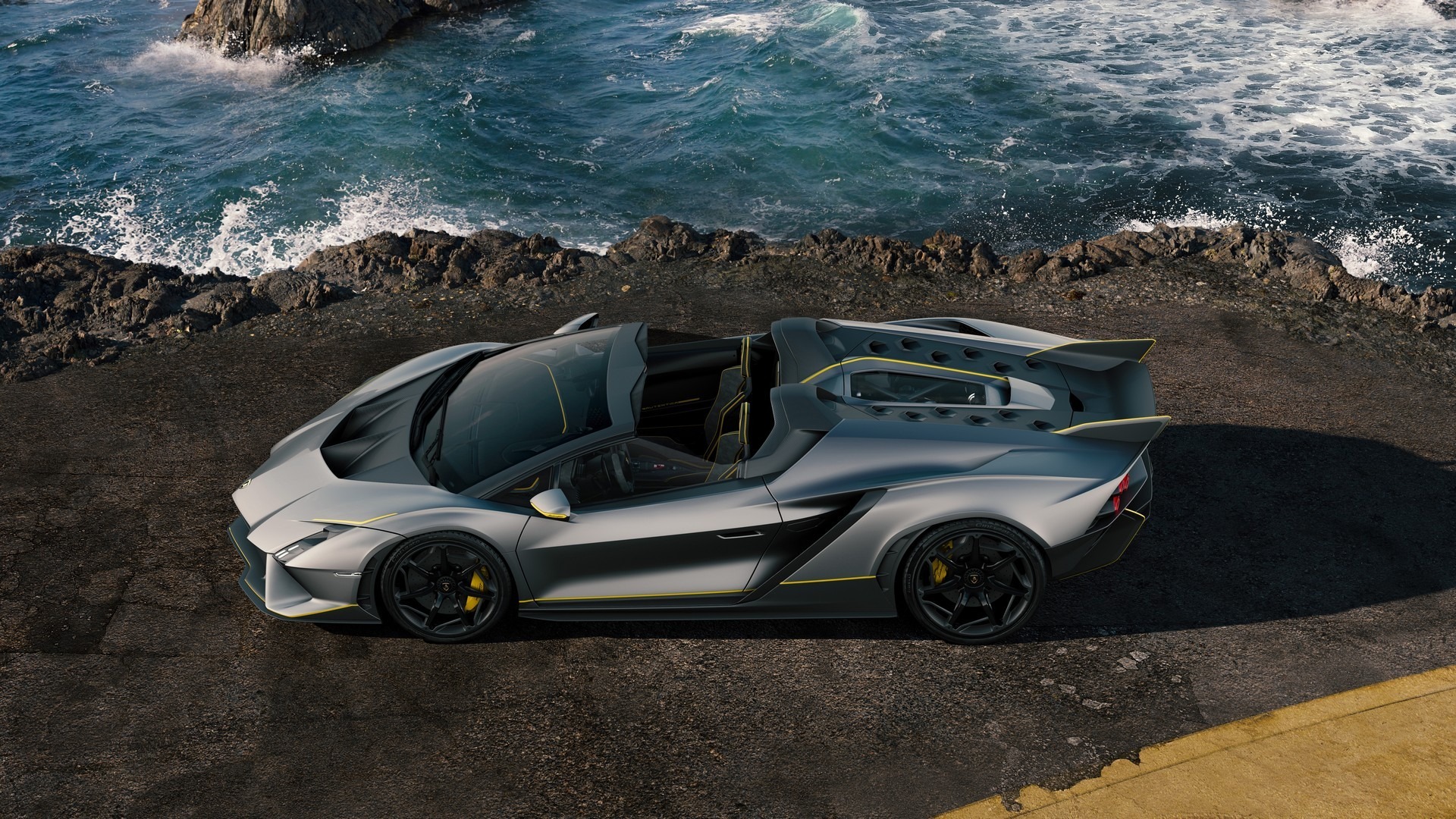Sixty years ago, Lamborghini premiered its first-ever automobile – the 350 GTV – that featured the brand’s first V12 masterpiece. The car was a prototype and never made it into production, but the engine inspired a bloodline of supercar powerplants. Today, that shining dozen of four-stroked elegant all-mightiness parts ways with the Italian brand, leaving the stage for the next generation of wheel-thriller drivetrains.

Lamborghini draws the curtain on its beloved and quintessential twelve-cylinder shrine of raging (super)power. In line with authentic Italian motoring fashion, the final farewell to the piston dozen is a double creation of tribute-paying one-offs.
A coupe and a roadster (what could be more befitting to parting ways with automotive history?), righteously named Invencible and Autentica. You needn’t have an MBA in Italian to immediately tell what the cars will go down in history as: Invincible and Authentic, just as Ferruccio envisaged his emblematic crank-spinning bulls to be.

Take a look at the photos – but use eye-protective gear: the further toward the limit the Lambos are, the sharper their edges become, and these two goodbye-waving homages are more radical than ever. Blades, laser-sharp lines, aggressive angles, contrasting blood-rushing colors, and – critically – naturally-aspirated V12 might: the extraordinary pair has everything and then some.
After the Invencible and Autentica, no other future Lamborghini four-wheeled tornado will enchant and thrill the automotive audience with the symphony of a 12-cylinder 6.5-liter engine mounted longitudinally in the rear (Longitudinale Posteriore, or LP, in the brand’s jargon). This is the end of a six-decade-long journey spurred by an ambitious man who wanted to make better Italian cars.

And boy, has he done it! The last of the V12 chorus to perform under the baton of the Sant’ Agata Bolognese engineering wizardry is a 780-ps (770-hp), 720-Nm (531 lb-ft) category V(12) hurricane. Tamed by a seven-speed ISR gearbox, the high-octane-to-adrenaline-overdose transcoder of an engine sends everything to all four corners.
Lamborghini didn’t chip the aura of mystical reverence with irrelevant performance specs about these two unique last-of-their-kind automobiles. However, the same drivetrain is found in their Veneno masterpiece from ten years ago. In that aerodynamics-defying concept, the engine can push 355 kph (221 mph) after thrashing the 0-62 mph (100 kph) in 2.9 seconds.
The Veneno is just one inspirational model from which the Invencible and the Autentica have caught shape. The Sesto Elemento and the Reventon – two other pillars of creation for Lamborghini – also donated their essence for the celebratory pair.

Penned by the artisans from Lamborghini Centro Stile (Styling Center), these two unrepeated master crafts of V12 engineering mark the clashing line between the old-school all-fossil naturally-aspirated means of (very fast) moving forward and the electrified future ahead. In Lamborghini’s case, that prophecy is told by a hybrid powertrain architecture (which will be unveiled in the following weeks).
Carved in carbon fiber, the monocoque cells of the Invencible and Autentica find their roots in the legacy of the Aventador. From the front (air intakes) to the exhaust (the triad of aerospace-grade steel alloy tips), the two one-offs breathe Sesto Elemento DNA.
Austere interiors strongly and conspicuously hint at track heritage – driving pleasure, road-only-focused attention. One large display behind the steering wheel is all the visual interaction between the car and its driver.
The Invencible coupe is overflowing with red shades, contrasting with the carbon fiber discretion on the door frames and sills. Ventilated center-locking wheels show the bright red brake calipers. The corrida-inspired color theme continues inside, with red-and-black pairings on the seats, central console, paddle shifters, and steering wheel.
The other last “Present Arms” salute to the V12, the Autentica roadster, is slightly more solemnly discrete in the color sector, with a Titanium Grey hue accentuated by subtle linear elements in Apogee Yellow (Giallo Auge in Italian).
The hornet-like shade of yellow is present on the front splitter, the racetrack-borrowed rear wing, and the massive brake calipers. The open-top persona is claimed out loud by the pair of massive rollbars behind the seats.
From 1963 until today, Lamborghini relied on just two basic V12 architectures – with many updates, upgrades, improvements, and technological breakthroughs added to suit the power, efficiency, and performance needs of the ever-more-sophisticated models launched by the Italian brand.
The first twelve-piston engine marked a paradigm-shifting philosophy embraced by Ferruccio: the V12 would represent not only the culmination of racing technology but also endow the most prestigious road-going mechanical superstars.
From the 350 GT to the Murcielago, the first Lamborghini V12 gave its heart to icons of the automotive universe: the Miura, the Espada, the Countach, the Diablo, or the LM 002, the primordial Rambo Lambo SUV of the 80s.
In 2011, the second V12 design emerged to fill the rear of the Aventador – and subsequently underline the epitome of Lamborghini’s relentless race for performance. From 690 hp (700 ps) in 2011, the last free-breathing V12 from the House of the Raging Bull reached its climax in the track-restricted Essenza V12 of 2020.
830 ps (818 hp) from the same 6.5-liter that kicked the Aventador into life – this is the “Lamborghini-most” V12 to bear the fighting bull emblem. Finding its last mass-produced expression in the Aventador LP 780-4 Ultimae Roadster from September 2022, the Lamborghini V12 will no longer burble idle, nor will it shriek eardrum-bleeding tunes at over 8,000 rpm.








